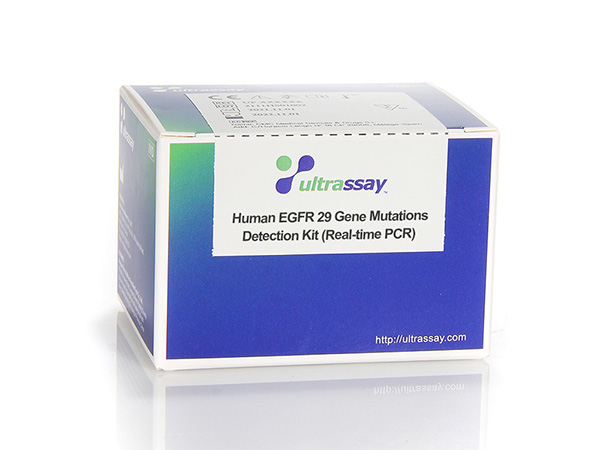Lung cancer has become the leading cause of cancer deaths in the world, seriously threatening human health. Among lung cancer patients, non-small cell lung cancer accounts for about 80%. EGFR is currently the most important molecular target for the treatment of non-small cell lung cancer. Phosphorylation of EGFR can promote tumor cell growth, differentiation, invasion, metastasis, anti-apoptosis, and promote tumor angiogenesis. EGFR tyrosine kinase inhibitor (TKI) can block the EGFR signal transduction pathway by inhibiting EGFR autophosphorylation, thereby inhibiting the proliferation and differentiation of tumor cells, promoting tumor cell apoptosis, reducing tumor angiogenesis, etc., so as to achieve tumor recovery. Targeted therapy [1]. A large number of studies have shown that the therapeutic efficacy of EGFR-TKI is closely related to the status of EGFR gene mutations, and can specifically inhibit the growth of tumor cells with EGFR gene mutations [2~3]. The EGFR gene is located on the short arm of chromosome 7 (7p12), with a full length of 200Kb, consisting of 28 exons. The mutation region is mainly located in exons 18-21, among which codons 746-753 on exon 19 are missing Mutations account for about 45% of mutations, and the L858R mutation on exon 21 accounts for about 40% to 45% [4]. The “NCCN Guidelines for the Diagnosis and Treatment of Non-Small Cell Lung Cancer” clearly states that EGFR gene mutation testing is required before EGFR-TKI medication. This test kit is used to guide the medication of epidermal growth factor receptor tyrosine kinase inhibitor (EGFR-TKI) drugs, and to provide a basis for personalized medicine for patients with non-small cell lung cancer. This kit is only used for the detection of common mutations in the EGFR gene in patients with non-small cell lung cancer. The test results are for clinical reference only and should not be used as the sole basis for individualized treatment of patients. Clinicians should combine the patient’s condition, drug indications, and treatment Factors such as reaction and other laboratory test indicators make a comprehensive judgment on the test results.
This detection kit uses PCR enrichment solution, ARMS (Amplification refractory mutation system) technology and Taqman probe combined method to detect L858R, 19del, and other common EGFR mutations. By enriching the mutation sites by PCR, the resolution and sensitivity of detection are further improved. Taqman probes are labeled with a reporter fluorophore FAM and a quencher fluorophore BHQ2. When the probe is intact, the fluorescent signal emitted by the reporter group is absorbed by the quenching group; during PCR amplification, the 5′-3′ exonuclease activity of Taq enzyme cleaves and degrades the probe, making the reporter fluorescent group and The quenching fluorophore is separated so that the fluorescence monitoring system can receive the fluorescence signal. The PCR enrichment solution reduces the wild-type background sequence through restriction enzyme digestion, and further improves the resolution and sensitivity of detection. The characteristics of the ARMS method: Taq DNA Polymerase, which has no 3′-5′ exonuclease activity, can specifically recognize the 3’end of the primer. Only when the 3’end of the primer is completely matched can the fragment at the mutation site be amplified normally. When the 3’end of the primer is mismatched, it cannot be effectively amplified. Therefore, using this method can selectively amplify the mutant sequence, and the Taqman probe is combined with the amplified product to identify the target sequence of the mutation.
The detection area selected by the internal control reaction solution is a relatively conservative segment on exon 2 of the human EGFR gene, about 120 bp, as a quality control for reagents, DNA quality, and the operation itself. Even if the DNA is degraded, the internal control can truly react to the system. The effective amount of DNA in the gene.
The detection system contains a certain proportion of dUTP, dNTP and uracil DNA glycosylase (UDG enzyme), this enzyme (also called uracil-N-glycosylase or UNG enzyme) can interrupt PCR containing dUTP Product, thereby effectively preventing PCR contamination.
Recommended order of sample types: fresh tumor tissue>frozen pathological section>paraffin-embedded pathological tissue or section>plasma or serum
Applied Biosystems™ Real time PCR system 7500, ABI QuantStudio™5 Real-time PCR system, LightCycler® 480 PCR system, Bio-Rad CFX96 real-time PCR instrument. Ultrassay eQ9600 Real Time qPCR System etc.



